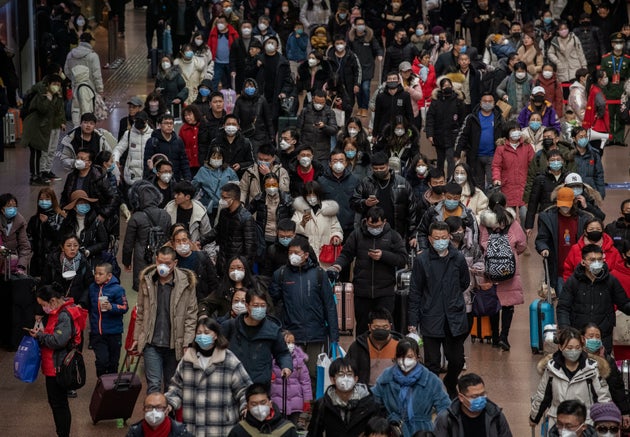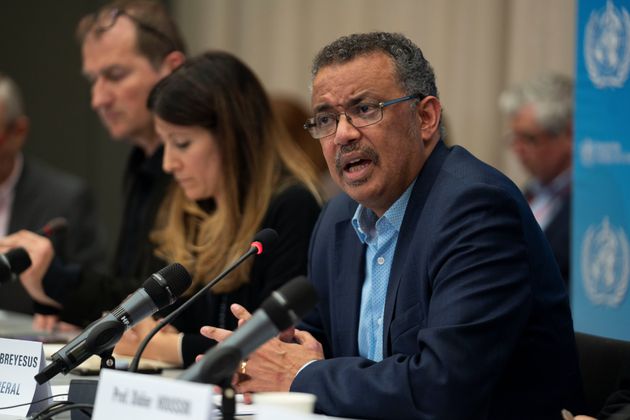The coronavirus outbreak, which appears to have originated in eastern China, has killed 25 people and infected nearly 830. Millions have effectively been quarantined as cities in China have been put on lockdown to halt the spread of the disease.
In the UK, 14 people have been tested with five confirmed negative and nine still awaiting the results.
But, crucially, no-one has yet been diagnosed with the illness. England’s chief medical officer has said the risk to the UK population is “low”.
Amid heightened global concern, here’s everything we know.
What is coronavirus?
Coronaviruses are a large family of viruses that cause illnesses ranging from the common cold to more severe diseases such as Severe Acute Respiratory Syndrome (Sars).
The strain that has recently emerged is a new strain that has not been previously identified in humans and is referred to clinically as 2019-nCoV.
How did coronavirus start?
Coronaviruses are zoonotic, meaning they are transmitted between animals and people, the World Health Organisation (WHO) says.
The first cases identified were among people connected to the now-closed Huanan Seafood Wholesale Market in Wuhan, a city with a population of 11 million people.
Cases have since been identified elsewhere which could have been spread through human-to-human transmission.

Questions remain about the outbreak’s nature and mode of transmission.
Chinese government expert Zhong Nanshan revealed on state television that human-to-human transmission had been confirmed.
WHO says some coronaviruses can be transmitted in this way, usually after close contact with an infected person, for example, in a household workplace, or healthcare centre.
Dr Nathalie MacDermott, National Institute for Health Research academic clinical lecturer, King’s College London, said: “While data is still limited it appears likely that the Wuhan coronavirus is spread through contact with an infected person’s secretions and respiratory droplet infection – this is contact with small particles in the air that occur when an infected person coughs or sneezes.”
What are the symptoms of coronavirus?
Initial symptoms of the new coronavirus include fever, cough, tightness of the chest, shortness of breath and breathing difficulties.
More severe cases can cause pneumonia, severe acute respiratory syndrome, kidney failure and death.
There are no specific treatments for a new coronavirus but symptoms can be treated.
Where has it been confirmed and how many affected?
The death toll in China rose to 25 with 830 cases confirmed, the country’s National Health Commission said on Friday.
The update also confirmed the first death outside the central province of Hubei, where the virus is thought to have originated.
At least three cities with a combined population of more than 18 million people have been put in lockdown in an unprecedented effort to contain the deadly new virus.
Chinese officials have not said how long the shutdowns will last.
Cases have been detected in other countries, including the US, Japan and South Korea, as increased precautions are taken to prevent the virus spreading during the busy Lunar New Year.
What about the UK in particular?
Fourteen people in the UK have been tested for coronavirus with five confirmed negative and nine still awaiting the results, Public Health England has said.
One man is being treated in the Royal Victoria Hospital in Belfast after he was thought to have been admitted with a high temperature.
The Scottish government confirmed there were five suspected cases in Scotland.
Prime minister Boris Johnson’s spokesman said the tests were “purely precautionary”.
England’s chief medical officer, Professor Chris Whitty, has revised the risk to the UK population from very low to low.
Health secretary Matt Hancock said there is an “increased likelihood” of cases of the new coronavirus occurring in the UK. But he said the UK is one of the first countries to develop a test for coronavirus and the NHS is ready to respond to any cases.
He added: “The public can be assured that the whole of the UK is always well prepared for these type of outbreaks and we will remain vigilant and keep our response under constant review in light of emerging scientific evidence.”
The Foreign Office has advised against all but essential travel to Wuhan, but has not changed its advice on other destinations which have reported cases.
Anyone arriving in the UK from Wuhan or via connecting flights is being screened at domestic airports.
Professor Neil Ferguson, director of the Medical Research Centre for Global Infectious Disease Analysis, said the UK is not a major destination of visitors travelling out of Wuhan.
But, he said: “Border screening and in this case, in the UK, alerting the health system, is not 100% foolproof – there could be a mild case.”
What is the public health advice?
The Department of Health and Social Care (DHSC) has issued clinical guidance for the detection and diagnosis of coronavirus and Public Health England (PHE) has developed a diagnostic test.
The UK is also one of the first countries outside China to have a prototype specific laboratory test for this novel disease.
Public Health England says doctors have already received advice, covering initial detection and investigation of possible cases, infection prevention and control, and clinical diagnostics.
Anyone who has developed respiratory symptoms within 14 days of visiting Wuhan, either in China, or on their return to the UK, should seek medical attention – but they are urged to phone ahead rather than visit a GP or hospital.
“They should phone ahead before attending any health services and mention their recent travel to the city,” Dr Nick Phin, deputy director of PHE’s national infection service, said.

How does it compare with previous similar illnesses?
The WHO has previously issued four ‘emergency’ declarations for disease outbreaks but says it is “too early” to do the same for this outbreak.
The first declaration happened in April 2009, with H1N1, or swine flu, spreading around the world and killing more than 200,000 people.
Britain recorded 214 deaths, while 20 people died from swine flu in Ireland.
The others were over increased wild polio numbers in Pakistan, Afghanistan and Nigeria in 2014, the deadly Ebola disease that broke out in Guinea, Liberia and Sierra Leone from August 2014 to March 2016 (as well as a second declared last July) and the life-threatening Zika virus in the Americas from February to November 2016.
Several experts say the new coronavirus appears to be less severe than its predecessors.
Paul Hunter, professor in medicine at the University of East Anglia, said typical flu epidemics can kill tens of thousands of people, but that previous new coronavirus outbreaks have led to fewer deaths.
For example, severe acute respiratory syndrome (Sars) killed about 800 people, while Middle East respiratory syndrome (Mers) led to about 450 deaths.
Prof Hunter said: “This new strain seems to be rather less lethal than the previous two outbreaks, however this could still change.”
What are experts saying?
The WHO on Thursday decided against declaring the outbreak a global emergency for now.
Such a declaration can bring more money and other resources to fight a threat but can also trigger economically damaging restrictions on trade and travel in the affected countries, making the decision politically fraught.
The decision “should not be taken as a sign that WHO does not think the situation is serious or that we’re not taking it seriously. Nothing could be further from the truth,” WHO director general Tedros Adhanom Ghebreyesus said.
“WHO is following this outbreak every minute of every day.”
Peter Piot, professor of global health and director of the London School of Hygiene & Tropical Medicine, said it was a “critical phase in this outbreak” and that there “cannot be any complacency as to the need for global action”.
He added: “The good news is that the data to date suggest that this virus may have a lower mortality than SARS, we have a diagnostic test and there is greater transparency than decades gone by. And that is essential because you cannot deal with a potential pandemic in one country alone.”